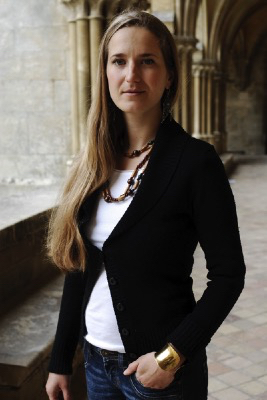Photo Elsa Seignol © Royaumont 2010
One of Alberto Giacometti's sculptures is 5 cm high and has a small cavity. It was shown in a Giacometti exhibition organised in Basel in 2009, where it stood alone on a big cube. In spite of everything, or even because of its small size, this sculpture had a stupefying impact on space. For me, that is equal to the impact produced by the calm that reigns across usually very lively places, in that sculpture animates space, changes our perception, transforms our conscience of it and creates an immensity based on the appearance of an intermediary space.
Sculpture - as well as sound in existing space - is a very fluid and highly complex entanglement. I do not conceive given space as something static, but more as something very plastic, alive and not at all set
in its appearance. As a result, piano music places an emphasis on fairly unstable processes and on the capacity to create immensity, different planes, etc.
In my piece, sound describes space in a specific way. Two elements - repetition and the glissandi on the piano's strings - are, for example, specific to the piano: repetition on one key is clearly possible to locate and quite mechanical; the glissando inside the piano, on the strings, is repeated and constantly changes the sound, like a harmonic glissando, making it percussive or darker. The piano is the source of the sound; the ensemble amplifies the piano's sound or alienates it like a transformer, but it additionally dissociates itself from the piano. However, the piece also meticulously scrutinises the impact of the prominent dynamic: the environment / intimacy.
